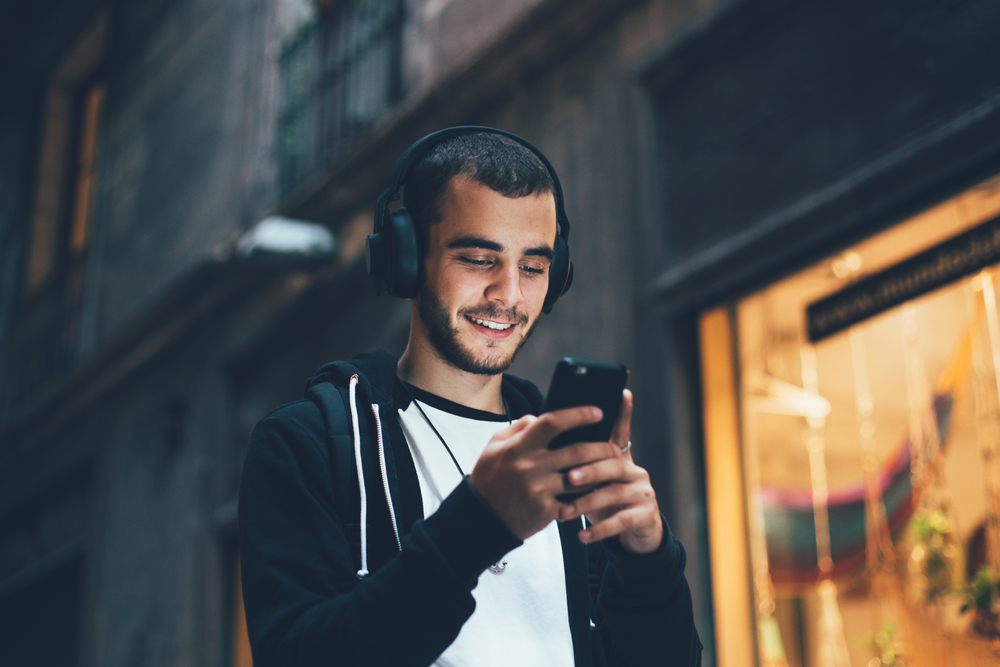
James is a music aficionado who has mastered the art of incorporating his favorite music into his day-to-day life, easily transitioning from Spotify at his workdesk to Pandora on his runs, and meticulously putting together playlists to beautifully enhance every activity, whether he’s pumping iron, whipping up a meal, or immersed in a gaming session. He’s rarely seen without his headphones, which have become an important part of his day-to-day life, turning every moment into a personalized audio adventure. James takes comfort and joy in the engaging realm of music, but the very source of his happiness might be harming his cherished ability to hear without him recognizing it.
Concerning our ears, there are both safe and hazardous ways to enjoy music. Unfortunately, a lot of us lean towards the second option.
What is the connection between extended exposure to music and hearing loss?
Extended exposure to loud sounds can lead to a decline in your auditory ability. We’re used to thinking of hearing loss as a problem related to growing old, but more and more research indicates that it’s really the build-up of noise-related damage that is the issue here and not anything intrinsic in the process of aging.
It also appears that younger ears are particularly susceptible to noise-related damage (they’re still developing, after all). And yet, young adults are more likely to be dismissive of the long-term dangers of high volume. So there’s an epidemic of younger people with hearing loss, thanks, in part, to rampant high-volume headphone usage.
Can one listen to music without any safety concerns?
Listening to music at full blast with no limits is the most hazardous approach. There is a way to enjoy to music more safely, which usually means decreasing the volume. The recommended safe volume levels are usually as follows:
- For Adults: No more than 40 hours of listening on a device, and maintain the volume lower than 80 dB.
- For Teens and Minors: You can still listen for 40 hours, but keep the volume level below 75 dB.
Forty hours per week translates into about five hours and forty minutes a day. Although it might seem excessive, the time can go by surprisingly fast. Even still, most individuals have a fairly strong concept of keeping track of time– it’s something we’re trained to do successfully from a really young age.
The more challenging aspect entails tracking your volume level. Devices like smartphones, computers, and TVs typically do not show volume in decibels. Its value is calculated using a somewhat subjective or relative scale. The range could be as wide as 1 to 100, or it might be as small as 1 to 16. You may not have any idea what the max volume on your device is, or how close to the max you are.
How to properly monitor your music volume
To address this issue, a number of free noise tracking apps are available for both iPhone and Android devices. These apps provide real-time insights into ambient noise levels, enabling users to adjust their music volume accordingly.
That’s why the majority of hearing specialists recommend the use of one of many free noise monitoring apps. These apps– extensively available for both iPhone and Android devices– will give you real-time readouts on the noises surrounding you. That way, you can monitor the dB level of your music in real time and make adjustments.
A volume comparison: garbage disposals and beyond
For example, a volume level of 80 decibels is comparable to the sound produced by a common garbage disposal or dishwasher – you can hear them, but they won’t blow your ears out. Identifying this standard is essential, as it represents the threshold beyond which auditory damage becomes a tangible risk.
It’s important to exercise increased vigilance when noise levels exceed this critical point. Consider reducing exposure to overly loud music by indulging in certain tracks at maximum volume rather than indulging in complete albums.
Repeated exposure to elevated volume levels can lead to hearing problems such as tinnitus and eventual hearing loss. By being cognizant of when our ears venture into the danger zone, we empower ourselves to make educated decisions, with the ultimate goal of fostering safer listening practices.
Schedule a hearing exam
For better prioritization of your hearing health, it is recommended to consult a hearing professional to schedule a comprehensive hearing exam. Taking practical steps like regular assessments can identify possible issues at an early stage, enabling quick actions and tailored advice to safeguard your valuable hearing.
